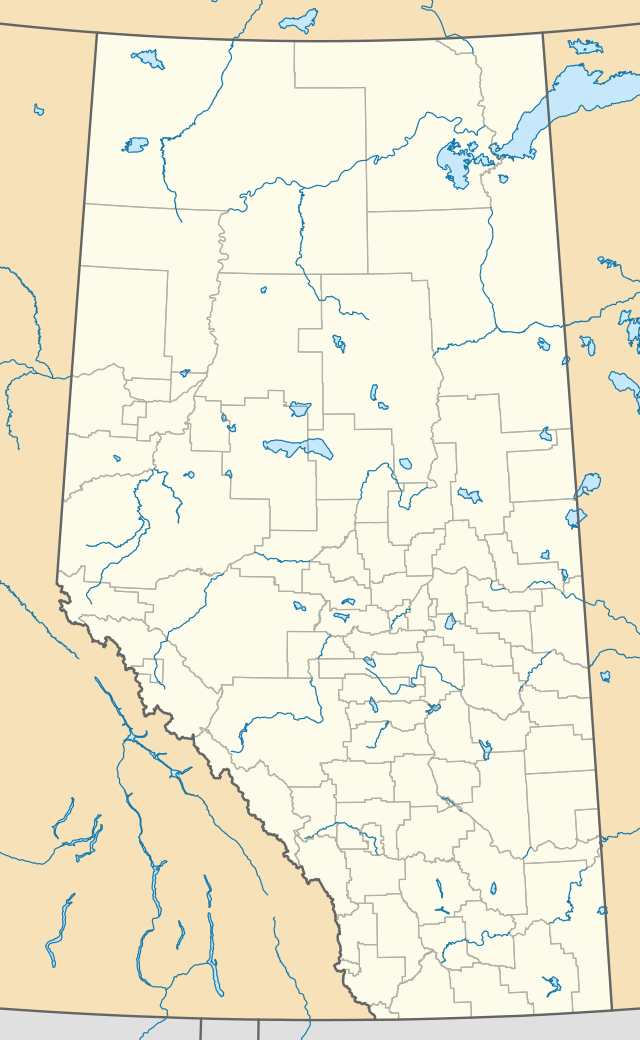Bow City, Alberta (former village)
Bow City is a former village[1] located in southeast Alberta, Canada. It is located on Highway 539 on the south shore of the Bow River approximately 31 km (19 mi) southwest of the City of Brooks. The Hamlet of Bow City is located 3.5 km (2.2 mi) to the east on the north side of the Bow River in the County of Newell.

The former village was named after the Bow River that flows through the province. All that remains of Bow City is a signpost indicating the location.
History
The Village of Bow City was incorporated on July 13, 1914 through a proclamation issued by Wilfred Gariepy, Minister of Municipal Affairs.[2] It subsequently dissolved on April 17, 1918.[3]
Bow City impact crater
According to Wired magazine a paper presented at an American Geophysical Union Conference in December 2012 by Wei Xie of the University of Alberta described a buried crater under Bow City.[4][5][6]
Demographics
| Year | Pop. | ±% |
|---|---|---|
| 1914 (est.) | 125 | — |
| 1915 | 54 | −56.8% |
| 1917 | 6 | −88.9% |
| Sources: | ||
References
- "1916 Census of Alberta - Detailed Subdivisions". Ontario Genealogical Society. January 2011. Retrieved 2011-07-13.
- "The Village of Bow City". Forgotten Alberta. 2010-07-04. Archived from the original on 2013-02-19. Retrieved 2011-07-13.
- "This village is being disorganized". Forgotten Alberta. 2010-09-20. Archived from the original on 2013-02-19. Retrieved 2011-07-13.
-
Nadia Drake (2012-12-04). "New Buried Aasteroid Impact Crater Discovered in Canada". Wired magazine. Archived from the original on 2013-02-19.
"I was really surprised," said Wei Xie, a graduate student in geophysics at the University of Alberta, who presented the find on Dec. 3 at the American Geophysical Union conference. So far, Xie says, only a handful of these buried craters are known. That's likely to change. "Our technology is really improving," she said.
-
Scott Sutherland (2012-12-04). "Ancient asteroid impact crater discovered near Alberta ghost town". Geekquinox. Archived from the original on 2013-02-19.
The seismic map of the crater shows the structure of it quite well, with its low-lying interior and characteristic central peak. The team also noted some potentially unique features of the crater, which indicate that some of the sediments were pushed directly outward from the impact, rather than being blown upwards (as would be expected).
- Rosemary Westwood (2012-12-06). "Grad student finds new asteroid crater in southern Alberta". Macleans magazine. Archived from the original on 2013-02-19. Retrieved 2013-02-19.
The crater has long been covered over and is estimated to be about 70 million years old. It took an analysis of data from boreholes drilled in the area and seismic wave surveys to show the giant crater below the surface. Xie and her colleagues will continue to search for definite proof, and they are looking for evidence of impact known as "shocked minerals."